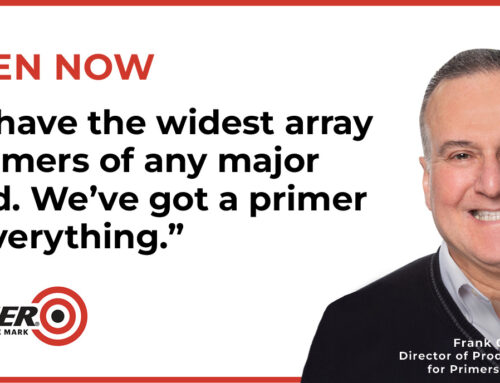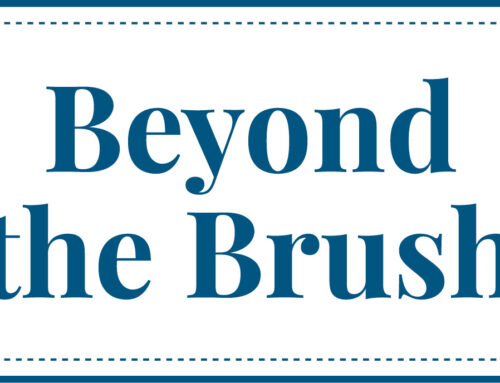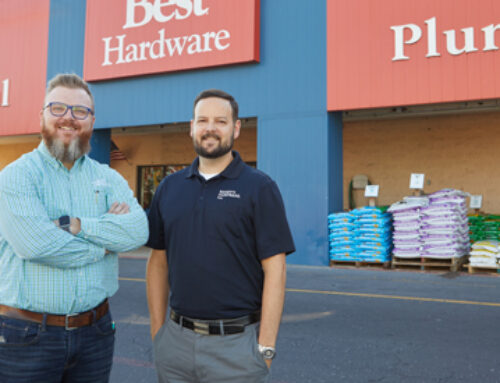Strong leadership is a vital component of a prosperous business because it provides an operation with direction and purpose while cultivating a positive, productive work culture. There are many ways to build and improve leadership in a company; successful strategies require meaningful investments in employees and take your team and business to the next level.
Paint & Decorating Retailer talked to two retailers who each take different approaches to leadership development in their businesses. On the following pages, meet leaders from Hoover Paint and Delta Lumber and learn how their strategies work for their operations.
Leading Others Into Leadership
Tim Bowling, owner of Hoover Paint, which has eight locations near Nashville, Tennessee, realized the need for strong leadership in a company early in his life. Bowling watched his parents spend many hours running Hoover Paint, with most of the duties falling on their shoulders.
“I realized early on that if I didn’t want to do everything myself and have every little thing depend on me, I would need to focus on hiring quality employees who could be developed into leaders,” Bowling says.
As the business grew, the need for focused leadership development became more apparent. Bowling’s store managers had always had a lot of freedom, but more structure was required for them to succeed as a company.
“Once we added our fourth location in 2004, it became more critical to implement a system that would keep us all moving forward in the same direction,” Bowling says. “It was a pivotal point where I realized that we needed to start getting more organized.”
Superb Strategies
For Bowling, developing leaders starts at the ground level. Most of Hoover Paint’s managers started with the company as counter staff and were hired because they naturally possessed the businesses’ core values, Bowling says.
Those core values boil down to one golden rule.
“We endeavor to treat people the way we want to be treated,” Bowling says. “This applies inward, between our staff, and outward, to our customers. We strive to always provide honest answers and proper solutions.”
The second component of quality leadership is an open line of communication between Bowling and his team.
“I maintain an open-door policy, so my leadership team is comfortable asking questions,” Bowling says. “I am always willing to listen to others and make changes as needed. I also make an effort to explain any decision I make so that everybody understands and learns from it.”
Creating a free and innovative work culture is also an important aspect of Bowling’s leadership development strategy.
“I give my employees the freedom to make their own decisions without worrying about me micromanaging them,” Bowling says. “They won’t always make the decision I would make, but we try to learn from our mistakes and our victories to push our operating bar higher. When employees are not afraid of making the wrong choice, they will excel because they are not working in a constant state of fear.”
Bowling employs a standard operating procedure, a collection of written and documented processes, to guide his employees in leadership positions and keep everyone on the same page. He also holds an annual two-day leadership meeting with his sales managers, office managers and store managers.
During these meetings, they review their core values and market niche and then dissect the prior year, address any issues and set plans for the coming year, Bowling says.
Smaller conversations occur more regularly between Bowling and his store managers and sales representatives. Once a month, he hosts meetings to keep everyone updated and moving in the same direction, Bowling says.
The third step is creating an environment where leaders are always learning.
“We aim to teach our leaders basic business principles and the technical product knowledge necessary to succeed,” Bowling says. “We do this by taking our managers to outside events like buying group shows and supplier markets.”
Bowling is no stranger to bringing in outside experts to develop his staff, and he has occasionally brought in guest presenters to speak on topics like operations, customer service and sales. Bowling also makes an effort to introduce his leadership team to other successful retailers, both inside and outside of their industry. During their meetings, they consider why these retailers are excelling and what can be learned from them, Bowling says.
Growth Through Development
Strong leaders do not always overtly show their success. Leadership skills are often displayed in subtle situations.
“I see leadership prevail in little ways,” Bowling says. “It could be offering extra time off to an employee going through a difficult time or a sales representative taking the initiative to drive two hours to retrieve a specific gallon of paint for a customer.”
Providing advancement opportunities has allowed staff to grow and develop and still remain an integral part of the company’s growth. When Hoover Paint had an employee who had developed to the point that he was ready to run his own store, a third location was added, and he was given that opportunity to grow with the company, Bowling says.
These opportunities for leaders within the company have aided in the expansion of the business and helps the eight-store operation run smoothly today.
“At the end of the day, offering leadership development has led to my employees taking initiative in the business,” Bowling says. “I try to have leaders with unique abilities who can do a better job than me in certain areas. I want to be surrounded by intelligent people who make our team better together than we would be if we were separate. When those are the people taking initiative in the business, everyone wins.”
Read Up on Leadership
NHPA staffers share two books on leadership and retail to help you strategize here.






